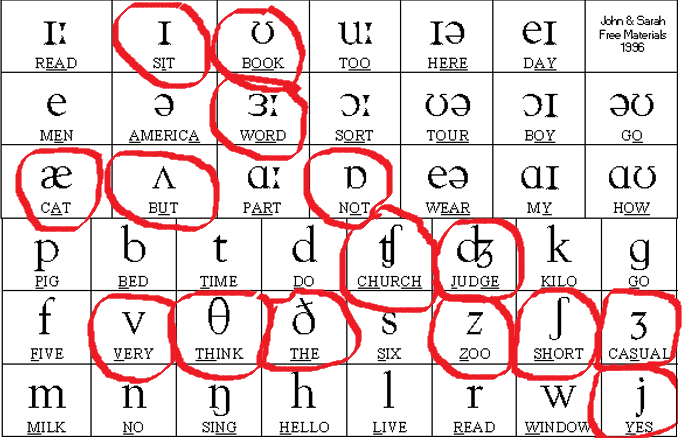Spanish and English are similar languages. This is good news if you teach Spanish speakers. Your students have an advantage many English language learners don’t have.
Of course, this doesn’t mean English is easy for Spanish speakers. Spanish speakers have unique challenges with English that you will need to address.
In this article, I’ll cover six tips for teaching English to Spanish speakers. These tips will help your students (a) capitalize on the similarities between English and Spanish, and (b) lessen negative transfer from Spanish to English.
1. Show your students the thousands of words they already know
Two great resources for this:
English to Spanish cognates (PDF from NYU which shows how Spanish words with certain endings can be converted to English words)
English – Spanish cognates list (PDF from Colorín Colorado which includes some cognates that don’t follow the rules outlined in the first PDF)
For practice, have students translate Spanish words to English by following the rules in the first PDF. Students will be surprised to learn how many English words they already know.
2. Teach Spanish to English false cognates
Where there are cognates, there are also false cognates. There are many English to Spanish false cognates students need to be aware of.
This practice exercise contains over 50 examples of English to Spanish false cognates. See the first section of this guide for Spanish speakers for an explanation of the false cognates used in the exercise.
3. Target the phonemes Spanish speakers have difficulty with
The circled phonemes tend to give Spanish speakers difficulty.

To help students with these phonemes, try these videos from Rachel’s English. These videos come from Rachel’s playlist of 33 sounds in American English. She has a video for each phoneme.
In addition to having difficulty with the phonemes above, Spanish speakers also have difficulty “finishing” words that end in consonant sounds (“ed” verb endings, for example), as well as pronouncing words that begin with the consonant clusters sp, sl, sm, sch, etc. Spanish speakers need extra practice producing these sounds.
4. Teach that English is stress timed and Spanish is syllable timed
English is a stress-timed language. We say function words (articles, auxiliary verbs, conjunctions, determiners, modals, prepositions, pronouns, and quantifiers) faster than we say content words (nouns, verbs, adjectives, and adverbs).
Spanish is a syllable-timed language. Spanish speakers stress syllables relatively equally. They don’t say function words faster than content words.
Here is a video from Rachel’s English about English as a stress-timed language.
Stress-timed languages are difficult for Spanish speakers because:
- Spanish speakers have comprehension difficulties because they are unprepared for the unstressed and/or reduced function words.
- Spanish speakers tend to stress every word and lack the rhythm of native speakers.
Teach your students that they shouldn’t expect every word to be stressed in English. As far as speaking goes, tell students to emulate the rhythm and intonation of native speakers, not just the pronunciation of individual words. You can also teach this lesson on reductions.
5. Teach students to write concisely
Spanish speakers struggle with conciseness. Spanish doesn’t use possessives, and instead relies on prepositional phrases. For example, in English we might say “Attached are the Q4 figures we reviewed in last week’s meeting,” but the literal translation from Spanish would be “Attached are the figures from Q4 that we reviewed in the meeting from last week.” The direct translation is too wordy.
Also, Spanish uses structures like “It is possible that…,” “It is probable that…,” “It is doubtful that…,” “It is important that…,” etc. A Spanish speaker might write something like “It is possible that we’re going to have to postpone the meeting” instead of the more concise “We might have to postpone the meeting.”
For practice, have students try these concise writing exercises. You can also review these concise writing tips from the Purdue OWL.
6. Review common mistakes Spanish speakers make
This error correction exercise contains 100 common mistakes Spanish speakers make in English. It’s a long exercise, and should be divided into chunks. For an intermediate group, 10-15 could be used at a time (perhaps as a board race or other interactive activity). Explanations of the mistakes can be found in this guide for Spanish speakers.
Conclusion
To conclude, it’s always a good idea to consider your students’ native language when planning a lesson. This way you can anticipate any issues students might have with the material. If you don’t know the language, you can always solicit the help of a coworker or friend.
What about you? Do you have any tips for teaching English to Spanish speakers? If so, please leave a comment below.